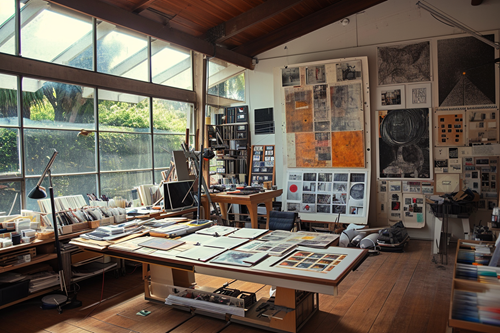Frank Gehry's Santa Monica studio, where Andrew Kromelow worked, played a significant role in the development of the knolling concept. Kromelow was employed as a janitor in this studio, which was engaged in furniture design for Knoll, a renowned US furniture manufacturer known for its boxy, modernist designs. The influence of Knoll's angular designs likely inspired Kromelow's method of organizing tools and objects.
In Gehry’s studio, Kromelow noticed that tools were often left in disarray. He started organizing these tools by laying them out at right angles to each other and to the edges of work surfaces. This method not only enhanced the efficiency of the workspace but also highlighted the aesthetic aspect of these everyday objects, showcasing their forms and shapes distinctly.
Tom Sachs, an artist working in the same studio, was intrigued by Kromelow's systematic approach. He adopted knolling in his own studio and integrated it into his artwork. Sachs is credited with popularizing knolling, turning it into a more widely recognized practice. He formalized the rules of knolling and emphasized its significance in both creativity and organization.
The studio thus became a breeding ground for this innovative method of organization, blending functionality with aesthetics. The concept of knolling has since transcended its original practical purpose, becoming an art form in its own right, celebrated for its simplicity and minimalistic appeal.
 - Copy.jpg)
 - Copy.jpg)
 - Copy.jpg)
 - Copy.jpg)
 - Copy.jpg)
 - Copy.jpg)
 - Copy.jpg)
 - Copy.jpg)
 - Copy.jpg)
 - Copy.jpg)
 - Copy.jpg)





